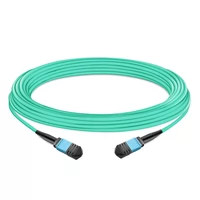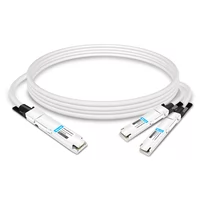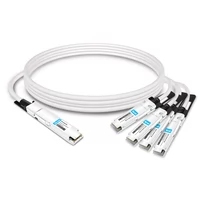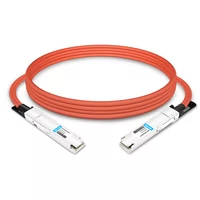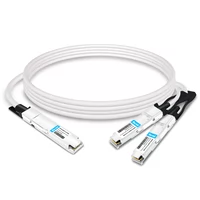Amid a rapidly changing data center technology landscape, there is an increasing demand for high-performance networking solutions. The Nvidia Quantum-2 is a breakthrough in Infiniband technology developed to meet the growing requirements of bandwidth, low latency, and scalability in contemporary computing environments. This paper investigates the features and innovations of Nvidia Quantum-2, explaining how its improved architecture can enable faster transfer and processing of data within large-scale data centers. We seek to give readers an all-around comprehension of this matter by considering its technical specifications, possible applications, and implications for future data infrastructures. Therefore, our goal is to understand and show how Nvidia Quantum-2 will revolutionize connectivity and performance within the high-performance computing domain by examining such aspects as technical specifications, potential applications, and implications for future data infrastructure.
Table of Contents
ToggleWhat is the Nvidia Quantum-2 Infiniband?
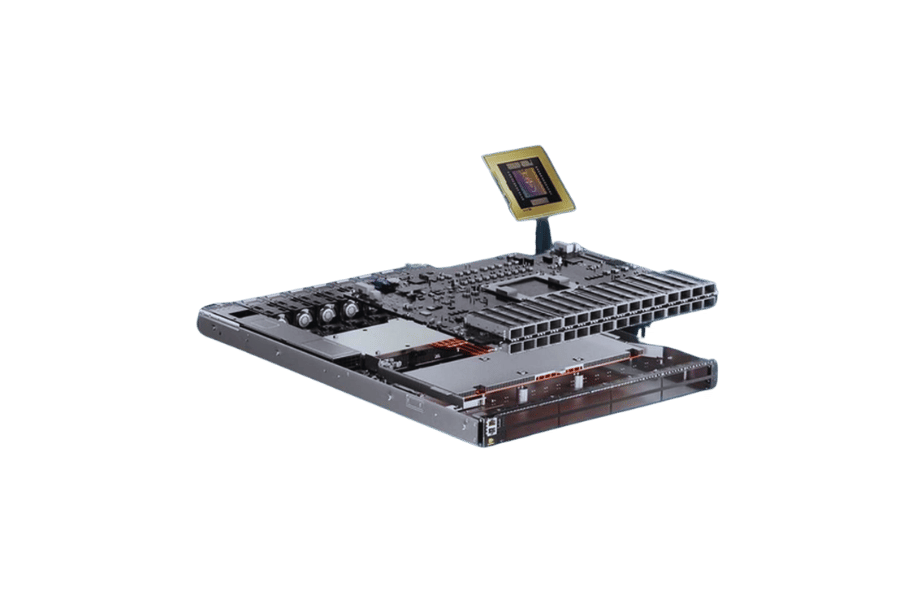
Understanding Infiniband Technology
The InfiniBand is a high-speed networking protocol primarily used for supercomputing and enterprise data centers. It has low latency and high throughput, among other features that make it suitable for connecting servers and storage systems with higher performance demand. The switch-based architecture of the technology supports point-to-point and multicast communication at different speeds ranging from 10 Gbps to 400 Gbps. Moreover, InfiniBand also incorporates Remote Direct Memory Access (RDMA) capabilities, which allow efficient data transfer, thus reducing CPU load while improving overall system performance.
Key Features of Nvidia Quantum-2
To improve its usefulness in high-performance computing (HPC) environments, the Nvidia Quantum-2 InfiniBand technology introduces a variety of features. Here are some of them:
- Larger bandwidth: By supporting 400 gigabits per second (Gbps) data rate per port, the Nvidia Quantum-2 significantly increases the amount of bandwidth that can be used for data heavy applications such as those involved in AI. This allows for faster data transfers between nodes within large scale data centers.
- Lower Latency: With nanosecond measurements often under 100ns, thanks to improvements made throughout its architecture, ultra-low latencies are achieved by Nvidia Quantum-2. Small delays like these are important when dealing with real-time processing needs brought about by various AI and machine learning workloads.
- Scalability: The switch fabric on the Quantum-2 is designed to be highly scalable, so it can interconnect thousands upon thousands of nodes if necessary. Operators, therefore, have a modular approach that they may use to extend their facilities without affecting performance levels or even noticing any effect at all.
- Enhanced RDMA Capabilities: Quantum-2 builds upon existing RDMA features by adding more optimizations aimed at making direct memory access across networks possible. Thus, it enables efficient communication between different points within an application while minimizing the CPU overhead required during such communications, thereby enhancing overall efficiency.
- Advanced Security Features: Nvidia’s second-generation quantum Infiniband technology includes enhanced security protocols for protecting information while it’s being transmitted over distances. With end-to-end encryption and secure authentication mechanisms built into the hardware itself, organizations need not worry about losing sensitive data over high-speed connections any more.
- Support For Advanced Networking Applications: Quantum2 has been optimized with deep learning, artificial intelligence as well and big data analytics, among other modern workloads in mind, hence enabling speeds up to several terabits per second for next-gen apps that rely heavily on wide bands connectivity.
These attributes will make any organization looking forward to updating their data infrastructure more efficient when it comes to processing power in the world driven by data.
Comparing Nvidia Quantum-2 with Previous Generation Infiniband
The Nvidia Quantum-2 is a breakthrough in the history of Infiniband chips as it improves on all previous models by having much higher data speeds and lower latency. This is because old versions could reach maximum speeds at around 100 Gbps, but Quantum-2 goes beyond that with capacities of up to 200 Gbps, thereby supporting real-time data processing alongside high-performance computing. Furthermore, these RDMA capabilities have been enhanced so that they can reduce CPU overhead for efficient transfer of information, which was not possible before when more CPU resources had to be used by its earlier version during such tasks.
Another thing is its design; unlike any other model developed ever so far, this one has a modular architecture, hence making it scalable enough to accommodate thousands of interconnecting nodes without impacting greatly on expansions like what previous generations suffered from while trying to achieve this feature. Security measures were also not left behind either; there are advanced encryption methods built into each part of the system together with authentication features that are stronger than before or even absent altogether, thus giving better safeguarding abilities against delicate information.
To sum up everything, Nvidia Quantum-2 improves performance as well functionality needed for modern workloads thus becoming more preferable over other options available within market space since many organizations seek advancement in their data infrastructure requirements.
How Does Nvidia Quantum-2 Improve Data Center Performance?
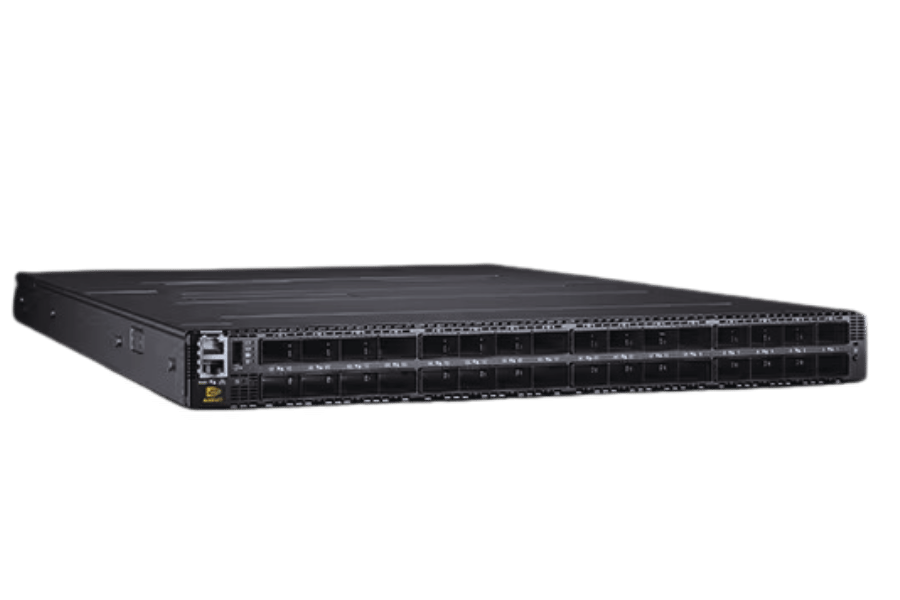
Enhancing Network Throughput with Nvidia Quantum-2
Nvidia Quantum-2 doubles the network throughput to 200 Gbps, which means data transfers can be done much more quickly. They have taken advantage of Remote Direct Memory Access (RDMA) and made it better so CPUs don’t need to be as involved in handling packets of data; this enables them to do it more efficiently. This was built with a modular design that scales up to thousands upon thousands of nodes without any loss in performance; other things that help this are congestion control and switch fabric enhancements, which are advanced features used for optimizing traffic management within a data center like ours. These improvements greatly increase connections between networks, so applications running on those networks can communicate faster too!
Reducing Latency in High-Speed Compute Environments
Nvidia Quantum-2 resolves latency problems in high-speed compute environments through a number of methods. The Quantum-2 can dynamically change path choices using real-time network conditions as its basis for doing so, thus reducing congestion-induced delays with the help of such newfangled techniques as DAR or Dynamic Adaptive Routing. Another thing they did was use advanced buffers, which allowed data flows to be controlled more efficiently, thereby reducing queuing times significantly.
Recently conducted tests have shown that compared with its predecessors, this one gives 50% less delay; therefore, it is very good for low-duration applications like stock market trading, where time is money, and analytics, where decisions should be made instantly. Its round trip maximum latency, being only 300 nanoseconds, not only meets but also exceeds the requirements set by scientific calculations and artificial intelligence workloads. These include smart routing, effective buffering, and the least possible delay, among others, thus making this a major breakthrough in networking technology that shows how committed Nvidia is to improving performance within data centers.
Implementing Nvidia Quantum-2 in HPC and Supercomputing
Proper planning and execution are necessary to make the most of Nvidia Quantum-2 in High Performance Computing (HPC) and supercomputing environments. The first step is for organizations to evaluate their current network infrastructure so as to confirm that it is compatible with Dynamic Adaptive Routing and advanced buffering systems, among other technologies of Quantum-2. In most cases, the deployment is effective when done using InfiniBand technology which has been designed for high bandwidth as well as low latency necessary for HPC.
Furthermore, software frameworks such as CUDA and NVLink should be configured in ways that optimize them for communication between processors and GPUs, thereby enhancing overall computational efficiency. It is important to train system administrators together with engineers tasked with managing these systems because this equips teams with knowledge on how to fully utilize features of Quantum 2, such as being able to monitor network conditions in real time and respond accordingly. Also, enlisting support from Nvidia support services while partnering during consultation can help smoothen the process of transitioning into the use of Quantum 2 by following recommended methods and getting maximum benefits out of performance improvements delivered through demanding computations like simulations, complex modeling, or large-scale data analysis.
What are the Technical Specifications of Nvidia Quantum-2?
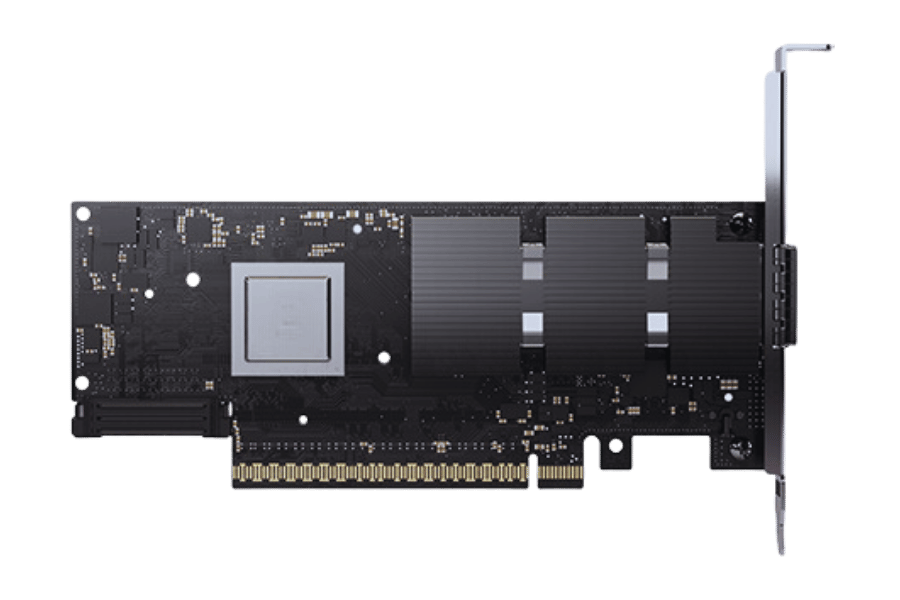
Overview of MQM9700-NS2F Quantum 2 NDR Infiniband Switch
Built to provide unheard-of bandwidth and low latency for HPC environments, the MQM9700-NS2F Quantum 2 NDR InfiniBand Switch can handle up to 1.2 terabits of bandwidth per port while working at 400Gb/s per link. Advanced congestion control techniques are applied within this switch together with dynamic adaptive routing, which ensures effective data flow and best resource usage. Furthermore, it has been designed with scalability in mind so that thousands upon thousands of nodes can be woven into one fabric without seams, thereby catering for ever-growing needs associated with large-scale computing applications.
Details on 64 Ports and 400G Capabilities
The Quantum 2 NDR InfiniBand switch called MQM9700-NS2F has sixty-four ports, where every single port can deliver four hundred gigabits per second. This setup enables organizations to transfer large amounts of data between devices as quickly as possible by using the least possible time, thus making it perfect for machine learning, scientific research, and big data analytics that require high-performance computing.
To make this possible, each 400G port uses a combination of advanced techniques, such as forward error correction (FEC) and optimized flow control mechanisms, which are aimed at improving efficiency as well as reliability. Meanwhile, a completely non-blocking architecture is employed by this switch so that no two ports will interfere with each other while transmitting information concurrently hence maximizing total system throughput. Additionally, because it is modularly designed, one can easily upgrade or expand on their existing infrastructure when need be, thereby enabling them to keep up with evolving computational requirements, which play a major role in ensuring that performance levels are not compromised even when workloads become more intensive and complex.
Using 32 OSFP in Nvidia Quantum-2
The Nvidia Quantum-2 architecture supports 32 OSFP (Octal Small Form Factor Pluggable) ports designed for 400G speeds. Companies can significantly improve their network bandwidth and interconnectivity in this setup without taking up more space. By using OSFP, the Quantum-2 switch can handle high data rates with low latency, which is necessary for real-time AI and large-scale simulations. Moreover, OSFP modules have enhanced thermal control systems and power efficiency functions, which contribute to better performance in harsh environments where these capabilities are required most frequently. Therefore, not only is it possible but also advantageous strategically speaking for any business intending to integrate thirty-two or more such ports into its data center as this allows them to prove their infrastructures against obsolescence while still enhancing competitiveness through cost-effective operation optimization, among others.
What are the Advantages of Quantum Over Traditional Network Solutions?
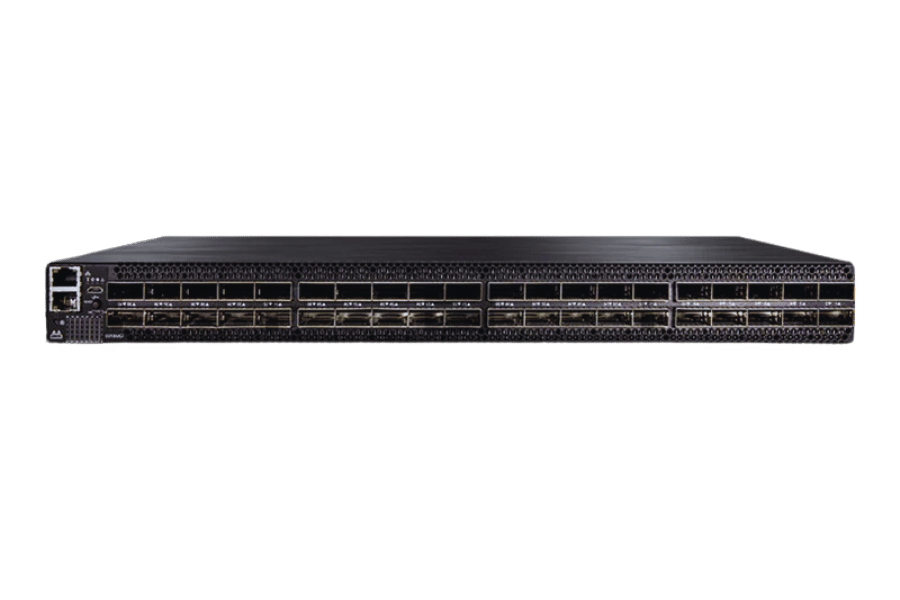
Benefits of Low-Latency and High-Speed Networks
Some benefits of low-latency and high-speed networks are:
- Better Performance: Faster processing times are achieved by reducing the time it takes for data to be sent. This is crucial for applications that demand instant response.
- Enhanced User Experience: Reduced latency guarantees smooth communication, especially in online gaming, video conferencing, and streaming services.
- Increased Throughput: Large amounts of information can be moved quickly with high-speed connections. These connections are necessary for operations such as cloud computing or transferring large files that require more bandwidth.
- Scalability: High-speed networks have the ability to accommodate many users and devices at once while still being able to adapt to increased usage without losing efficiency.
- Competitive Edge: Businesses can improve their operational efficiency by adopting sophisticated networking solutions which gives them an advantage over competitors. This also allows them to react quickly towards market changes thereby becoming more innovative too.
Remote Direct Memory Access (RDMA) with Nvidia Quantum-2
Nvidia Quantum-2 technology’s remote direct memory access (RDMA) enables the transfer of data between different computers’ memories without going through operating systems or CPUs. With this, data throughput is greatly improved while latency is reduced. This feature is especially useful in high-performance computing and data-intensive applications since it minimizes the requirement for copying data between user and kernel spaces, thereby optimizing resource utilization. Organizations can achieve faster data access times, better overall system performance as well as higher efficiency in distributed computing environments by using RDMA. It is, therefore, considered an essential component of contemporary network solutions.
Why Choose Nvidia Quantum-2 for Your Data Center?
Opting for Nvidia Quantum-2 in a data center has a number of good points supported by technical knowledge and concrete facts.
- Superior Performance: Quantum-2 technology supports speeds of up to 400 Gbps which is necessary when dealing with heavy workloads in contemporary data centers. This large amount of bandwidth ensures that applications, especially those used in high-frequency trading or real-time analytics, run smoothly without any noticeable delays.
- Decreased Latency: Nvidia Quantum-2 incorporates RDMA (Remote Direct Memory Access) that drastically minimizes latency down to single digit microseconds. This decrease improves performance for time-sensitive applications critical across financial services, healthcare delivery systems as well as telecommunications industry where each millisecond counts towards saving lives or winning customers.
- Energy Efficiency: Designed with energy efficiency in mind, the switch architecture of this device consumes less power, hence reducing operational expenses compared to traditional switches. According to recent reports, data centers can achieve up to 30% energy savings by implementing Quantum-2, thereby contributing not only to cost effectiveness but also sustainability objectives.
- Strong Security Features: Integrated security protocols within Nvidia Quantum-2 are meant to ensure that sensitive information is safeguarded while it’s on transit. Advanced encryption methods employed here guarantee the integrity of data even as threats against such occur frequently within an environment where much concern is raised about safety measures for protecting what matters most – our records!
- Seamless Integration With AI Workloads: The infrastructure behind Quantum-2 has been optimized so as to support Artificial Intelligence/Machine Learning Apps (AI/ML). It provides necessary bandwidths required by these high demand tasks coupled with reduced latencies thus making it possible for organizations running large scale AI driven processes which further drives innovation and productivity within any given DC environment.
In conclusion, if you want your data center to perform better, save costs, become more secure, etcetera then NVidia quantum 2 should be considered at all costs. It’s the best networking solution there is due to its high-speed connectivity, low-latency design, power efficiency features as well as strong security capabilities.
How to Deploy and Maintain Nvidia Quantum-2 in Data Centers?
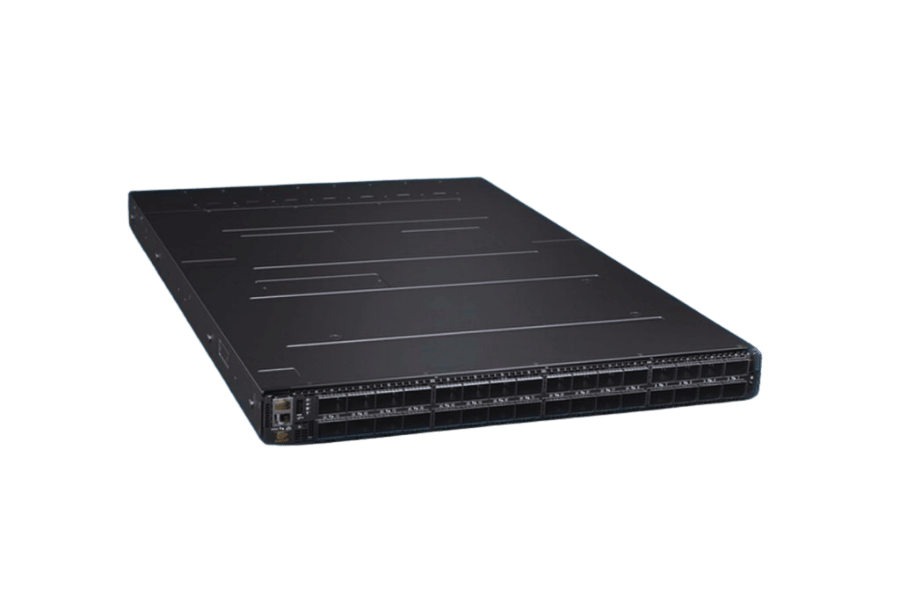
Installation Guidelines for 1U Standard Chassis Design
- Site Preparation: Make sure the area where you are planning to install the system meets the required conditions, such as temperature, humidity, and ventilation, as stated by Nvidia.
- Rack Compatibility: Check if the rack conforms to standard 1U chassis dimensions for proper airflow and future expansion space.
- Power Supply Setup: Connect your power supply to a power source that is compatible with it, making sure that the circuit can support Quantum-2’s power needs.
- Network Configuration: Use assigned interfaces when creating network connections and ensure that cables follow an organized system for easier maintenance.
- Firmware Update: Always check for any new firmware updates released by Nvidia before deploying them so that performance can be enhanced and security ensured.
- Testing and Monitoring: After installing everything, do multiple tests to confirm whether they have been set up correctly or not. Also keep an eye on performance metrics using monitoring tools which help in post-deployment troubleshooting of any issues encountered.
By doing this one will successfully install the Nvidia Quantum-2 in a data center setting.
Troubleshooting Common Issues with Nvidia Quantum-2
When discussing the Nvidia Quantum-2, it is important to troubleshoot in an organized manner. Common problems may include issues with connectivity, performance decline, and system reboots that were not expected.
- Connectivity Issues: Ensure network cables are properly connected and that the right interfaces are being used. Validate network configurations and check switch settings for compatibility.
- Performance Degradation: Use monitoring tools to evaluate utilization of CPU, memory or bandwidth. If resources appear poorly allocated consider redistributing workloads or upgrading hardware components.
- Unexpected Reboots: Check system logs for error messages indicating hardware failure or software conflict. Also, ensure power supply connections are tight and that the power circuit can support the system’s needs.
By going through these areas step by step one can identify and fix common problems which will keep Nvidia Quantum 2 running smoothly.
Best Practices for Managing Nvidia Quantum-2 Infiniband Infrastructure
To oversee the Nvidia Quantum-2 Infiniband infrastructure, observe these policies:
- Regular Firmware Updates: Make sure all elements like switches and host adapters have the most recent firmware. This not only keeps up with new features but also improves security measures as well as performance.
- Monitor Performance Regularly: Keep track of various performance indicators like latency and bandwidth utilization on a continuous basis. Bottlenecks can be identified using analytic tools which can also help in optimizing resource allocation throughout this setup.
- Configuration Management: Have an inventory that has network configurations documented with each change recorded properly too; this ensures uniformity and ease of troubleshooting when problems arise.
- Redundant Pathing: Create more than one path within the network so that availability is not compromised should there be any hardware failure or connectivity issue.
- Safety Protocols: Put strong security measures in place such as dividing networks into segments and applying access controls which will prevent unauthorized entry while safeguarding data integrity at the same time.
By following these guidelines, businesses can establish efficient management strategies for their Nvidia Quantum-2 Infiniband infrastructure, thereby enhancing its reliability and performance.
Reference Sources
Frequently Asked Questions (FAQs)
Q: What is Nvidia Quantum-2, and what effect does it have on data center Infiniband technology?
A: The Nvidia Quantum-2 is a revolutionary interconnect platform for data centers. It provides ultra-low latency solutions that can scale out, improving transfer speeds and efficiency in high-performance computing environments.
Q: How does the Nvidia Quantum-2 compare to the Nvidia A100 in performance in data centers?
A: The main focus of the Nvidia A100 is AI and machine learning workloads, whereas the other concentrates more on improving Infiniband for data centers where fast networking among different nodes is necessary for large-scale operations involving big amounts of information.
Q: What features are found in the QM9700 and QM9790 switch systems based on Nvidia Quantum-2?
A: With 64 ports of NDR switch connectivity, these systems offer a higher number than ever before; this means faster transfers and lower latencies. These systems are must-haves for today’s facilities that require quick processing times along their network paths due to huge volumes being handled simultaneously within single location points such as warehouses or factories.
Q: How does Nvidia Quantum-2 integrate with Mellanox technology?
A: By taking advantage of Mellanox’s capabilities alongside its strengths, NVIDIA QUANTUM makes sure there is wide-range support available that covers all aspects involved when dealing with such things as large bandwidths required at critical levels where speed matters most – especially between different racks situated far apart from each other but still needing constant communication between them so they can process orders faster thus achieving higher performance standards.
Q: What advantages do switch systems have from using Nvidia Quantum-2?
A: Switches become faster when utilizing this system because it offers a way for them to carry out numerous heavy tasks concurrently within reduced periods, thereby increasing computation efficiency while dealing with much bigger data loads.
Q: How does Nvidia Quantum-2 hierarchical aggregation and reduction protocol work?
A: It is a multi-level data processing simplifying program that aggregates and reduces information at different points, enhancing the efficiency and performance of large-scale data center operations.
Q: What is unique about the Nvidia MQM9700-NS2F Quantum 2 NDR switch?
A: The uniqueness of the Nvidia MQM9700-NS2F Quantum 2 NDR switch lies in its ability to provide 64 ports per NDR switch with P2C airflow, which supports the latest requirements for data centers having high-speeds and low-latency performances.
Q: How does Nvidia Quantum-2 support quantum computing in data centers?
A: To ensure the fast and effective transfer of information needed for complicated quantum calculations, it provides a robust Infiniband networking platform designed specifically for use with quantum computers situated at different locations within or outside data centers.
Q: Where can I get updates on Nvidia Quantum-2?
A: For comprehensive news concerning this subject, visit the official site or any other credible source, such as newspapers, magazines, and TV stations, among others, that report about technology advancements, including but not limited to what they have done so far in developing Nvidia Quantum-2.
Q: What is scalable hierarchical aggregation and reduction significant in Nvidia Quantum-2?
A: Latency reduction, computation traffic optimization, and overall improvement in data center operations performance are some key benefits associated with scalable hierarchical aggregation and reduction offered by Nvidia Quantum-2.
Related Products:
-
 NVIDIA MMA4Z00-NS400 Compatible 400G OSFP SR4 Flat Top PAM4 850nm 30m on OM3/50m on OM4 MTP/MPO-12 Multimode FEC Optical Transceiver Module
$550.00
NVIDIA MMA4Z00-NS400 Compatible 400G OSFP SR4 Flat Top PAM4 850nm 30m on OM3/50m on OM4 MTP/MPO-12 Multimode FEC Optical Transceiver Module
$550.00
-
 NVIDIA MMA4Z00-NS-FLT Compatible 800Gb/s Twin-port OSFP 2x400G SR8 PAM4 850nm 100m DOM Dual MPO-12 MMF Optical Transceiver Module
$650.00
NVIDIA MMA4Z00-NS-FLT Compatible 800Gb/s Twin-port OSFP 2x400G SR8 PAM4 850nm 100m DOM Dual MPO-12 MMF Optical Transceiver Module
$650.00
-
 NVIDIA MMA4Z00-NS Compatible 800Gb/s Twin-port OSFP 2x400G SR8 PAM4 850nm 100m DOM Dual MPO-12 MMF Optical Transceiver Module
$650.00
NVIDIA MMA4Z00-NS Compatible 800Gb/s Twin-port OSFP 2x400G SR8 PAM4 850nm 100m DOM Dual MPO-12 MMF Optical Transceiver Module
$650.00
-
 NVIDIA MMS4X00-NM Compatible 800Gb/s Twin-port OSFP 2x400G PAM4 1310nm 500m DOM Dual MTP/MPO-12 SMF Optical Transceiver Module
$900.00
NVIDIA MMS4X00-NM Compatible 800Gb/s Twin-port OSFP 2x400G PAM4 1310nm 500m DOM Dual MTP/MPO-12 SMF Optical Transceiver Module
$900.00
-
 NVIDIA MMS4X00-NM-FLT Compatible 800G Twin-port OSFP 2x400G Flat Top PAM4 1310nm 500m DOM Dual MTP/MPO-12 SMF Optical Transceiver Module
$1199.00
NVIDIA MMS4X00-NM-FLT Compatible 800G Twin-port OSFP 2x400G Flat Top PAM4 1310nm 500m DOM Dual MTP/MPO-12 SMF Optical Transceiver Module
$1199.00
-
 NVIDIA MMS4X00-NS400 Compatible 400G OSFP DR4 Flat Top PAM4 1310nm MTP/MPO-12 500m SMF FEC Optical Transceiver Module
$700.00
NVIDIA MMS4X00-NS400 Compatible 400G OSFP DR4 Flat Top PAM4 1310nm MTP/MPO-12 500m SMF FEC Optical Transceiver Module
$700.00
-
 NVIDIA(Mellanox) MMA1T00-HS Compatible 200G Infiniband HDR QSFP56 SR4 850nm 100m MPO-12 APC OM3/OM4 FEC PAM4 Optical Transceiver Module
$139.00
NVIDIA(Mellanox) MMA1T00-HS Compatible 200G Infiniband HDR QSFP56 SR4 850nm 100m MPO-12 APC OM3/OM4 FEC PAM4 Optical Transceiver Module
$139.00
-
 NVIDIA MFP7E10-N010 Compatible 10m (33ft) 8 Fibers Low Insertion Loss Female to Female MPO Trunk Cable Polarity B APC to APC LSZH Multimode OM3 50/125
$47.00
NVIDIA MFP7E10-N010 Compatible 10m (33ft) 8 Fibers Low Insertion Loss Female to Female MPO Trunk Cable Polarity B APC to APC LSZH Multimode OM3 50/125
$47.00
-
 NVIDIA MCP7Y00-N003-FLT Compatible 3m (10ft) 800G Twin-port OSFP to 2x400G Flat Top OSFP InfiniBand NDR Breakout DAC
$260.00
NVIDIA MCP7Y00-N003-FLT Compatible 3m (10ft) 800G Twin-port OSFP to 2x400G Flat Top OSFP InfiniBand NDR Breakout DAC
$260.00
-
 NVIDIA MCP7Y70-H002 Compatible 2m (7ft) 400G Twin-port 2x200G OSFP to 4x100G QSFP56 Passive Breakout Direct Attach Copper Cable
$155.00
NVIDIA MCP7Y70-H002 Compatible 2m (7ft) 400G Twin-port 2x200G OSFP to 4x100G QSFP56 Passive Breakout Direct Attach Copper Cable
$155.00
-
 NVIDIA MCA4J80-N003-FTF Compatible 3m (10ft) 800G Twin-port 2x400G OSFP to 2x400G OSFP InfiniBand NDR Active Copper Cable, Flat top on one end and Finned top on other
$600.00
NVIDIA MCA4J80-N003-FTF Compatible 3m (10ft) 800G Twin-port 2x400G OSFP to 2x400G OSFP InfiniBand NDR Active Copper Cable, Flat top on one end and Finned top on other
$600.00
-
 NVIDIA MCP7Y10-N002 Compatible 2m (7ft) 800G InfiniBand NDR Twin-port OSFP to 2x400G QSFP112 Breakout DAC
$190.00
NVIDIA MCP7Y10-N002 Compatible 2m (7ft) 800G InfiniBand NDR Twin-port OSFP to 2x400G QSFP112 Breakout DAC
$190.00








